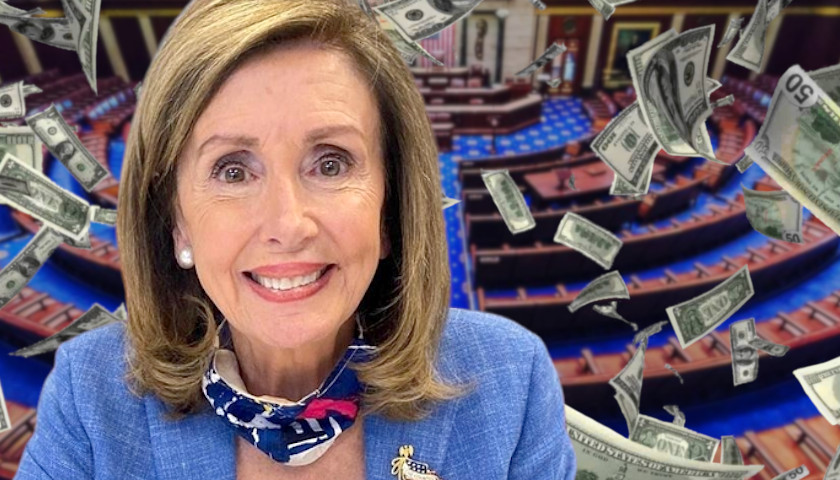by Jonathan Miltimore
House Speaker Nancy Pelosi officially stepped away from leadership last week after two decades directing the political agenda of House Democrats.
There’s no denying the historic nature of the California lawmaker’s tenure, whose leadership began in 2002 when she became the first woman elected House minority whip. She’d go on to take up the gavel of House speaker twice (from 2007–2011 and 2019–2023), making her the only female House speaker in history and one of a few to serve nonconsecutive terms.
As far as political careers go, Pelosi’s has been a clear success. Yet as journalists write hagiographic portraits of her career, one aspect of Pelosi’s legacy has received little attention: the massive federal debt accumulated since she ascended to leadership in Washington.
This does not mean, of course, that Pelosi is solely responsible for the debt crisis facing the United States. The list of those who deserve blame is long, and it includes members of both major political parties.
That said, it’s difficult to find a single politician in either party who bears more responsibility than Pelosi. For years, she talked a tough game about pay-as-you-go rules in the House, ostensibly designed to prevent new deficit spending, yet the U.S. government racked up an unprecedented amount of deficit spending on her watch.
The process was aided by Pelosi’s refusal to allow floor amendments and by her embrace of massive omnibus bills that congressional members were not given time to review.
“No other Speaker, President, or Senate Majority Leader, can even come close to her indubitable record of deficit spending,” Kentucky Rep. Thomas Massie contends.
Many progressives will deny this, of course. They’ll shrug off the anti-democratic process. They’ll argue that passing Obamacare was a moral imperative and blame the debt on the government’s 20-year excursion in Afghanistan (a war Pelosi voted for). They’ll decry Republican tax cuts “for the rich.”
This two-step is to be expected. Meanwhile, the country’s debt-to-GDP ratio has reached 122 percent, higher than the maximum sustainable level, according to International Monetary Fund economists.
Despite the daunting figures (and historic inflation), the spending orgy continues in Washington.
On top of the $1.7 trillion omnibus bill recently passed, many are pushing to “cancel” student-loan debts, a policy Pelosi supports (though she threw a wrench in the works by admitting that the president lacks the authority to pass it unilaterally). Medicare for All and universal pre-k education remain high-priority targets.
That Democrats have no serious plan to pay for any of this doesn’t seem to bother them. They appear content to pass the bills on to future generations. This is not socialism in the traditional sense, but it calls to mind French economist Frédéric Bastiat’s quip that “the state is that great fiction by which everyone tries to live at the expense of everyone else.”
Though Americans might not see the costs of these policies, they do exist. The government currently spends $400 billion per year just to finance the interest on its debt. Those costs are expected to reach $1.2 trillion annually by 2032.
“Within 10 years the federal government will spend more on interest costs than it has historically spent on R&D, infrastructure, and education combined,” researchers at the Peter G. Peterson Foundation concluded.
Americans were warned about this.
George Washington warned at length about the destructive nature of debt, and he was joined by Ben Franklin, James Madison, and Thomas Jefferson, the latter of whom called public debt “the greatest of the dangers to be feared.”
Fortunately for Pelosi, the problem is no longer hers. She’s riding off into the sunset a very rich woman.
We don’t know how future historians will view the former speaker’s tenure, but it’s safe to say that the founders would have viewed her legacy as a disaster.
– – –
Jonathan Miltimore is the managing editor of FEE.org. His writing/reporting has been the subject of articles in Time magazine, the Wall Street Journal, CNN, Forbes, Fox News, and Star Tribune.
Photo “Nancy Pelosi” by Nancy Pelosi.




